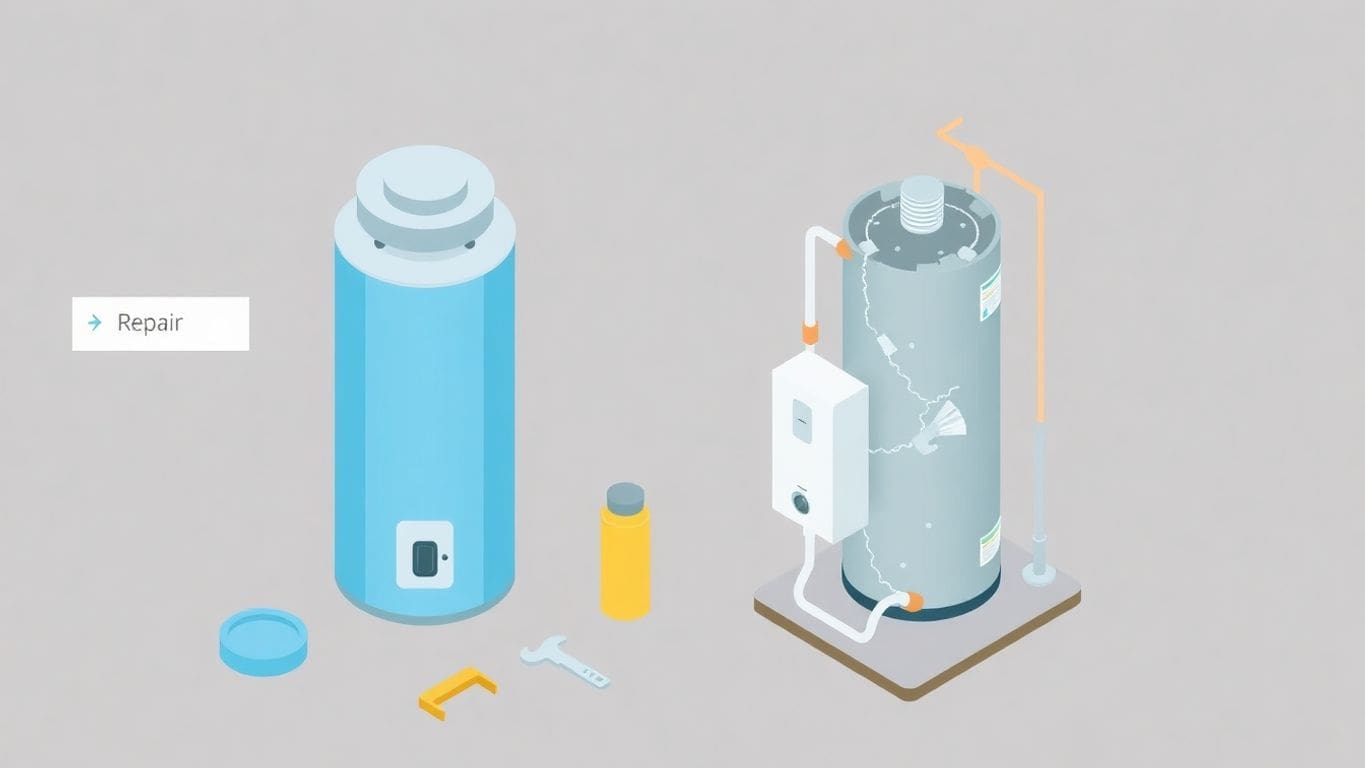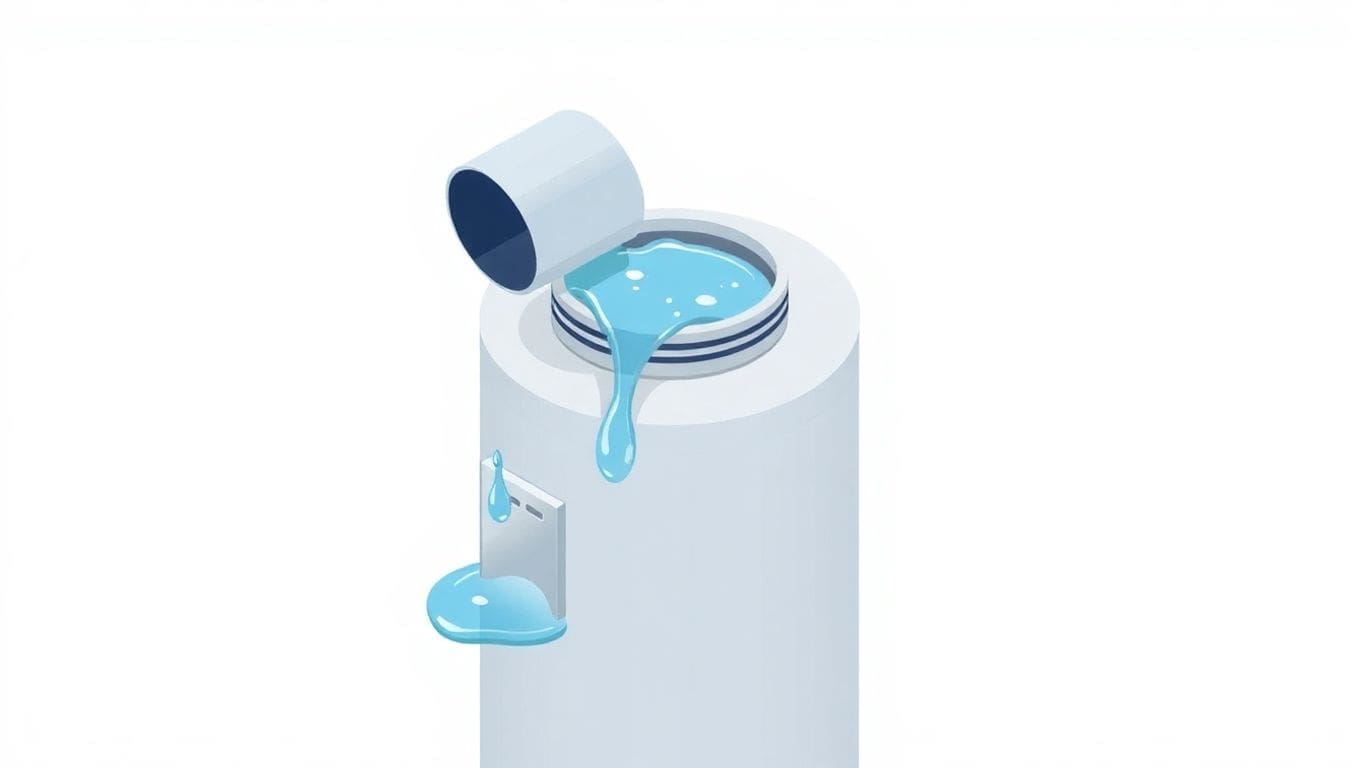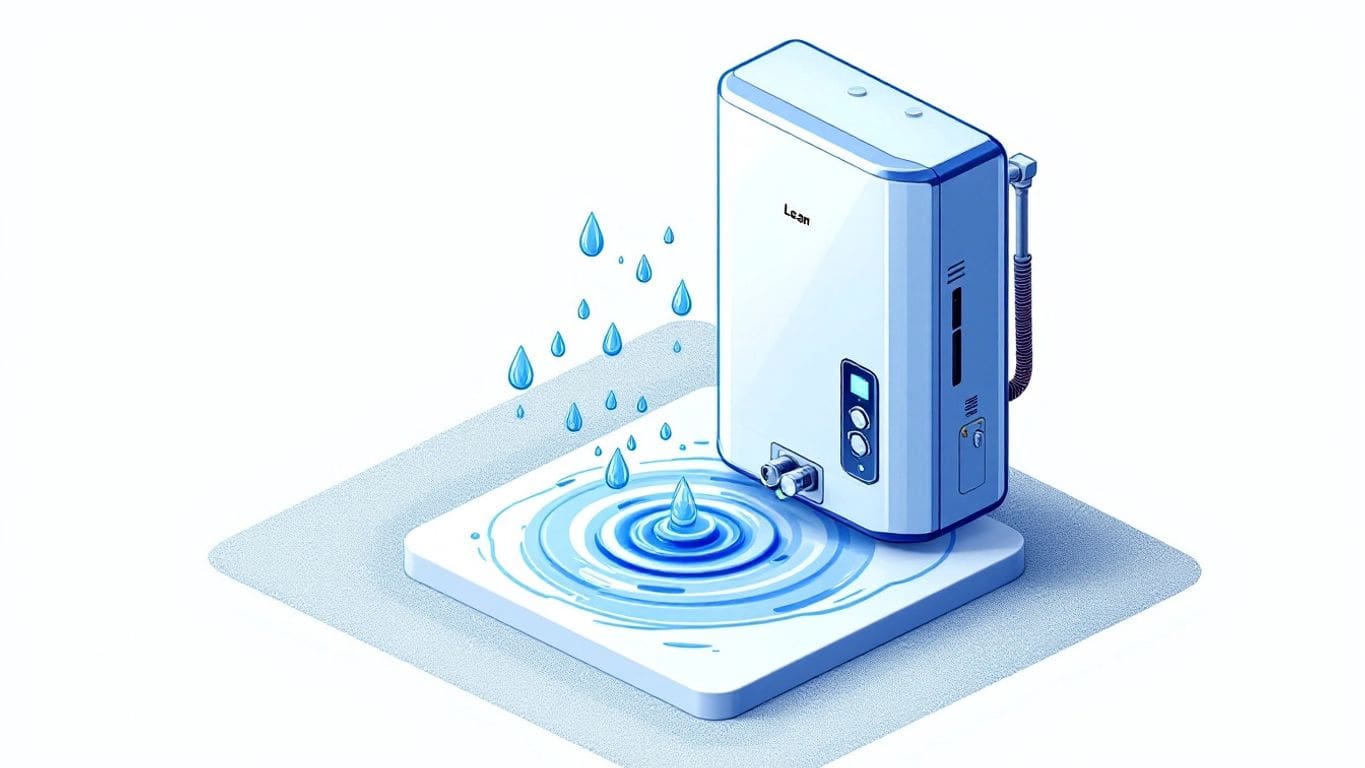
Ever noticed a puddle of water around your water heater and wondered why it’s leaking? Well, it might be due to the relief valve. This little component is crucial for keeping your water heater safe by releasing excess pressure. But when it starts leaking, it can be a sign of a problem. Let’s dive into why this happens and what you can do about it.
A water heater relief valve is a small but important part of your water heater. Its main job is to keep you safe by letting out extra pressure or heat from the water heater. If the pressure or temperature inside gets too high, the valve opens up. This stops the tank from bursting or getting damaged.
You’ll usually find the relief valve on the side or the top of your water heater. It’s connected to a pipe that carries any released water safely to the floor or a nearby drain. This setup helps prevent water from spraying everywhere, which could cause a mess or damage.
The relief valve works like a safety switch. It opens when the pressure inside the tank goes above a certain point, usually around 150 pounds per square inch (psi). It can also open if the water temperature gets too hot, typically over 210 degrees Fahrenheit. By doing this, it helps keep your water heater running smoothly and safely.
It’s important to keep an eye on your water heater, especially if it’s getting old. If it’s around 20 years old, it might be time to think about getting a new one. Older heaters can leak, use more energy, and need more repairs. A new, energy-efficient model could save you money and work better.
One of the main reasons your water heater’s relief valve might leak is due to excessive pressure inside the tank. When water heats up, it expands. Without a place to go, this expansion can cause pressure to build up. If the pressure gets too high, the relief valve opens to let out some water and relieve the pressure. It’s like a safety valve for your tank. If you notice the valve leaking, checking the pressure with a gauge might be a good idea. Ideally, you want the pressure to be between 40 and 80 psi.
Another cause could be the water temperature being too high. If your thermostat is set too high or is malfunctioning, the water can heat up more than it should. This can cause the relief valve to release water to prevent overheating. Keeping an eye on your thermostat settings can help avoid this issue.
Over time, minerals and debris can settle at the bottom of your water heater tank. This sediment can mess with the valve’s ability to seal properly, causing leaks. Regularly flushing your tank can help reduce sediment build-up. It’s a simple maintenance step but can save you from bigger problems down the line.
Keeping your water heater in check can prevent leaks and other issues. Regular maintenance is key to a long-lasting and efficient system.
Have you ever noticed a small pool of water forming around your water heater? This could be a sign that the relief valve is leaking. Water collecting near your heater is a clear indicator that something’s not quite right. It’s important to check regularly for any water accumulation, especially if your heater is more than 10 years old. Monitoring your water heater’s condition can prevent unexpected problems and water damage.
Another sign of a leaking relief valve is continuous dripping. If you hear a constant drip-drip sound, it might be coming from the valve. This can happen when the valve is releasing excess pressure or if it’s simply worn out. Keep an ear out for unusual water sounds, as they can be a helpful clue.
Unusual noises like hissing or whistling can also point to a relief valve issue. These sounds mean that the valve might be struggling to release pressure properly. Don’t ignore these noises; they’re like your heater’s way of asking for help. If you hear them, it’s time to take a closer look at the valve.
Regularly checking for these signs can save you from bigger problems down the road. If you spot any of these issues, consider getting a professional to take a look.
To start, you’ll need a pressure gauge. These are inexpensive and can be found at most hardware stores. They attach to your water heater’s outlet valve. Here’s how you can check the pressure:
Normal pressure for your water heater is between 40 and 80 psi. If it goes over 150 psi, the relief valve might leak to let out some pressure.
If you find the pressure is too high, here are some steps you can take:
Regularly checking your water heater’s pressure can help prevent leaks and extend its life. It might seem like a small task, but it can save you a lot of hassle in the long run.
The thermostat on your water heater controls the temperature of the water. If it’s set too high, it can cause the water to overheat. When water gets too hot, the relief valve may open to release some of the pressure. This helps prevent the tank from bursting.
Overheating is a big problem. It can cause the relief valve to leak. When the water gets too hot, it expands. This builds pressure inside the tank. If the pressure gets too high, the relief valve will open. This might lead to water dripping from the valve.
To keep your water heater from overheating, follow these steps:
Keeping an eye on your water heater’s temperature can save you from bigger problems down the road. It’s a simple way to keep your home safe and your water heater working well.
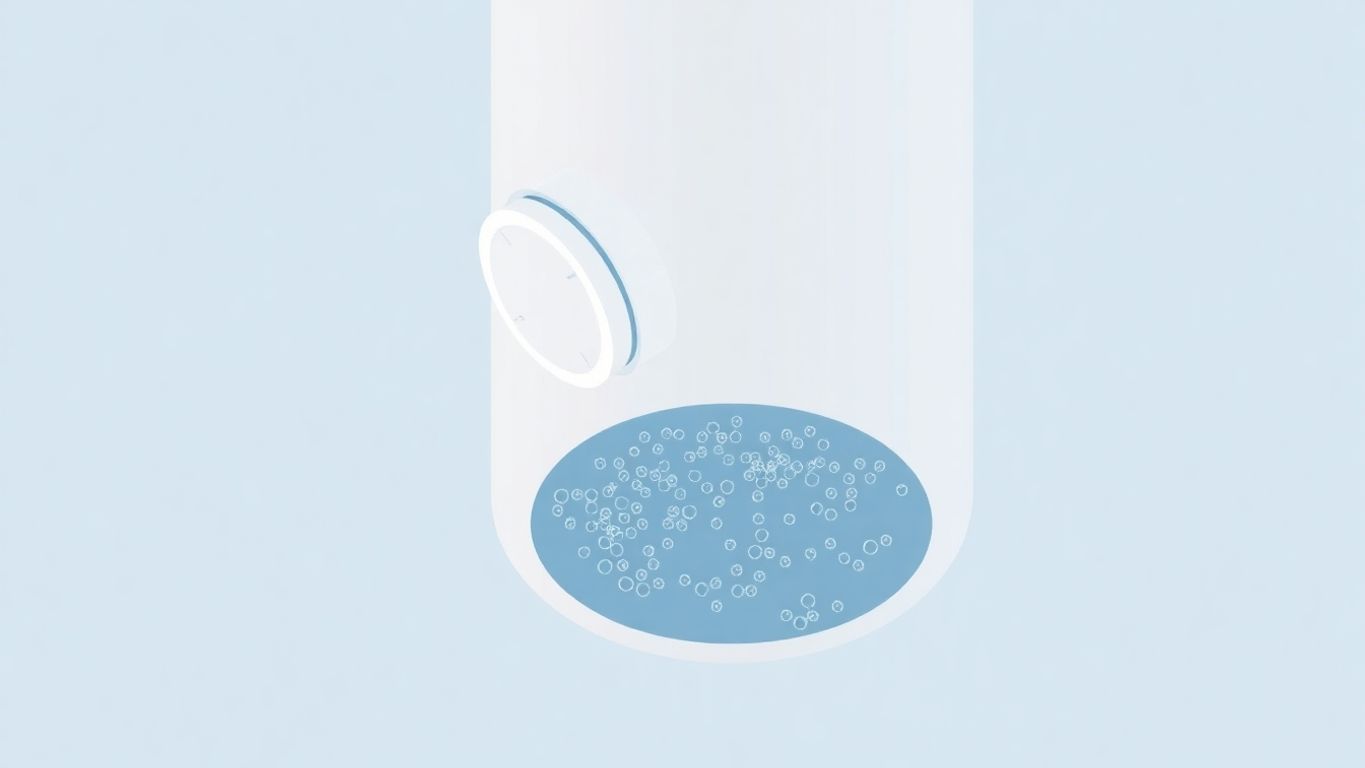
Sediment in your water heater is like sand in your shoes—annoying and problematic. Over time, minerals in water settle at the bottom of the tank. This build-up can lead to all sorts of issues, including leaks from the relief valve. When sediment piles up, it can cause the water heater to overheat. This makes the pressure inside rise, and the relief valve might open to let out some steam. If this keeps happening, the valve can wear out or get stuck.
Keeping your water heater clean is key. Here’s how you can do it:
Preventing sediment build-up can save you a lot of hassle. Here are some tips:
Regular maintenance isn’t just about keeping things tidy. It’s about ensuring your water heater runs smoothly and safely, avoiding unexpected problems down the road.
It’s important to know when your water heater’s relief valve needs replacing. One clear sign is constant leaking. If you notice water dripping steadily from the valve, it’s time to take action. Another sign is rust or corrosion around the valve. This can weaken the valve and cause it to fail. Also, if the valve doesn’t open during regular testing, it might be stuck and need replacing.
When picking a new relief valve, make sure it matches your water heater’s specifications. Check the pressure rating and temperature settings on your current valve. Most valves are set for 150 psi and 210°F, but double-checking is smart. You can find this info on the valve itself or in your water heater’s manual. Consider getting a valve from the same brand as your heater for a better fit.
Replacing a relief valve might seem simple, but it can be tricky. If you’re handy, you might handle it yourself. Here’s a quick guide:
But if you’re unsure, calling a professional plumber is best. They have the tools and know-how to do it safely. Plus, they can check for other issues while they’re at it.
Replacing your water heater relief valve on time can prevent bigger problems down the road. It’s a small step that keeps your home safe and your hot water flowing smoothly.
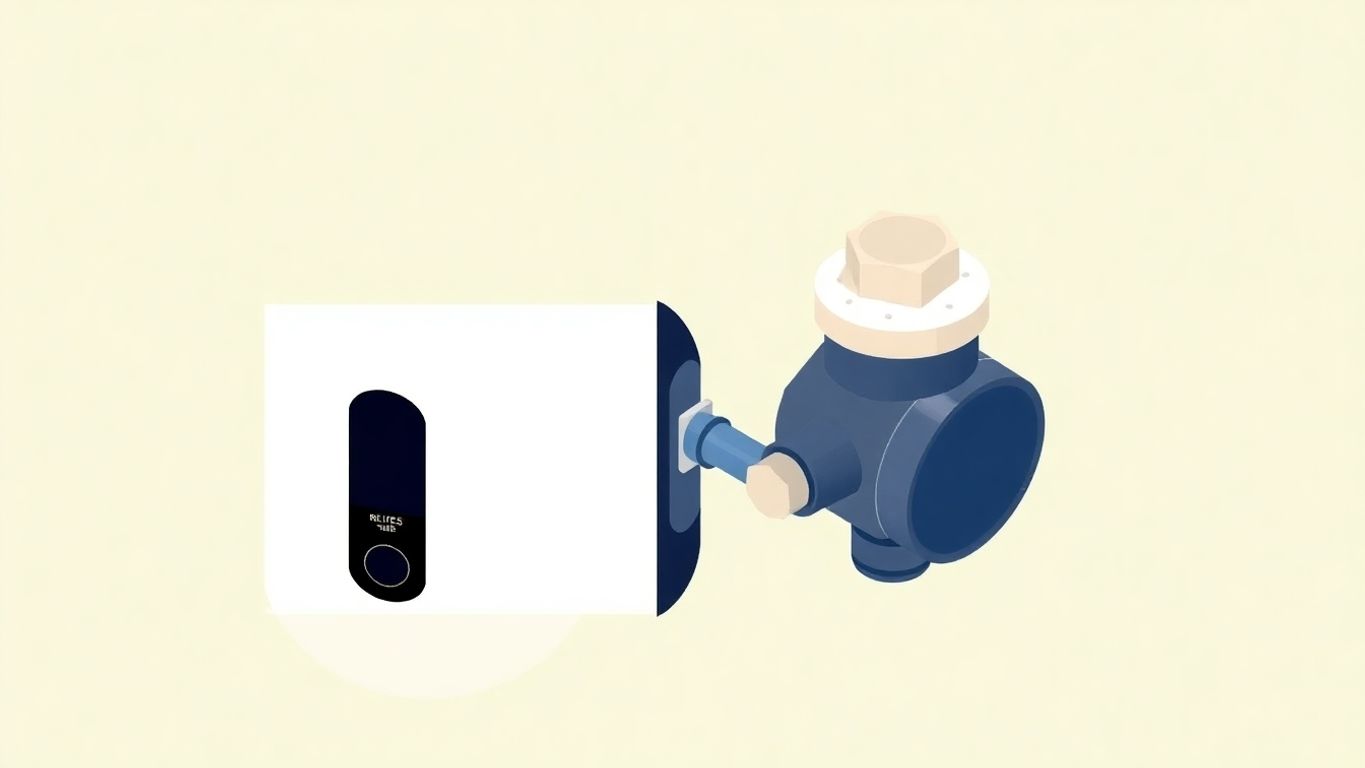
Keeping your water heater in good shape can stop leaks before they start. Regular maintenance is key to making sure your relief valve works like it should. Here are some simple steps you can follow:
Adding an expansion tank can help manage pressure changes. When water heats up, it expands. An expansion tank gives this extra water a place to go, keeping pressure steady and preventing leaks.
Keep an eye on your home’s water pressure. Use a pressure gauge to check it. Ideal pressure is between 40 and 60 psi. High pressure can stress your heater and cause leaks.
If you think your water heater’s relief valve is leaking, don’t wait too long. Fixing small issues early can save you from bigger problems later. For more insights on water heater issues, you might find this blog helpful.
Sometimes, the problems with your water heater aren’t as simple as they seem. You might notice leaks, noises, or inconsistent hot water. These can be signs of bigger issues. A professional plumber can easily spot these complex problems. They have the tools and know-how to fix things right the first time.
Hiring a plumber can save you time and stress. They are trained to handle all sorts of water heater problems. With their help, you can avoid further damage to your home. Plus, they can offer tips to keep your heater running smoothly.
When you need a plumber, you want someone you can trust. Look for plumbers with good reviews and proper licenses. Ask friends and family for recommendations. It’s important to find a plumber who is honest and dependable.
Don’t wait until it’s too late. If you’re unsure about your water heater, it’s better to call a professional. They can help you avoid costly repairs down the road.
Taking care of your water heater can really help it last longer. Just like you need check-ups at the doctor, your water heater needs some love too. Regular maintenance is key to keeping it running smoothly. You should flush the tank once a year to get rid of any sediment. Sediment is just dirt and minerals that settle at the bottom. If you let it sit there, it can cause big problems over time.
Keeping up with maintenance can save you money. It might seem like a pain, but it’s worth it. When your water heater works well, it uses less energy. That means lower bills for you! Plus, fixing small problems now can stop them from becoming big, expensive ones later.
Safety is super important too. A well-maintained water heater is less likely to have dangerous issues. You don’t want leaks or even explosions, right? Make sure to check the pressure relief valve regularly. This little part helps keep the pressure in your tank at a safe level. If you ever notice something off, like strange noises or leaks, it might be time to call a professional. They can help you figure out what’s going on and fix it safely.
Remember, taking a little time for maintenance now can save you a lot of trouble later. It’s like making sure your car has oil and gas before a big trip. Your water heater will thank you!
A water heater relief valve is a safety device that helps prevent too much pressure or heat from building up inside the tank. It opens to release water if things get too intense, keeping your heater safe.
Leaks can happen if there’s too much pressure, the water is too hot, or if the valve is broken. Checking these things can help you figure out what’s wrong.
Look for puddles of water around the heater, listen for strange sounds, or watch for continuous dripping from the valve.
First, check the pressure and temperature settings. If they’re too high, adjust them. If the valve is damaged, it might need replacing. Call a plumber if you’re unsure.
You might be able to fix it by adjusting settings or replacing the valve if you’re handy. But if you’re not comfortable, it’s best to call a professional plumber.
It’s a good idea to check it at least once a year during routine maintenance to make sure it’s working properly.
Excessive pressure can be caused by high water pressure in your home or thermal expansion when water heats up and expands.
If you’ve tried fixing the leak and it’s still there, or if you’re not sure what’s causing the problem, it’s time to call a professional plumber.

